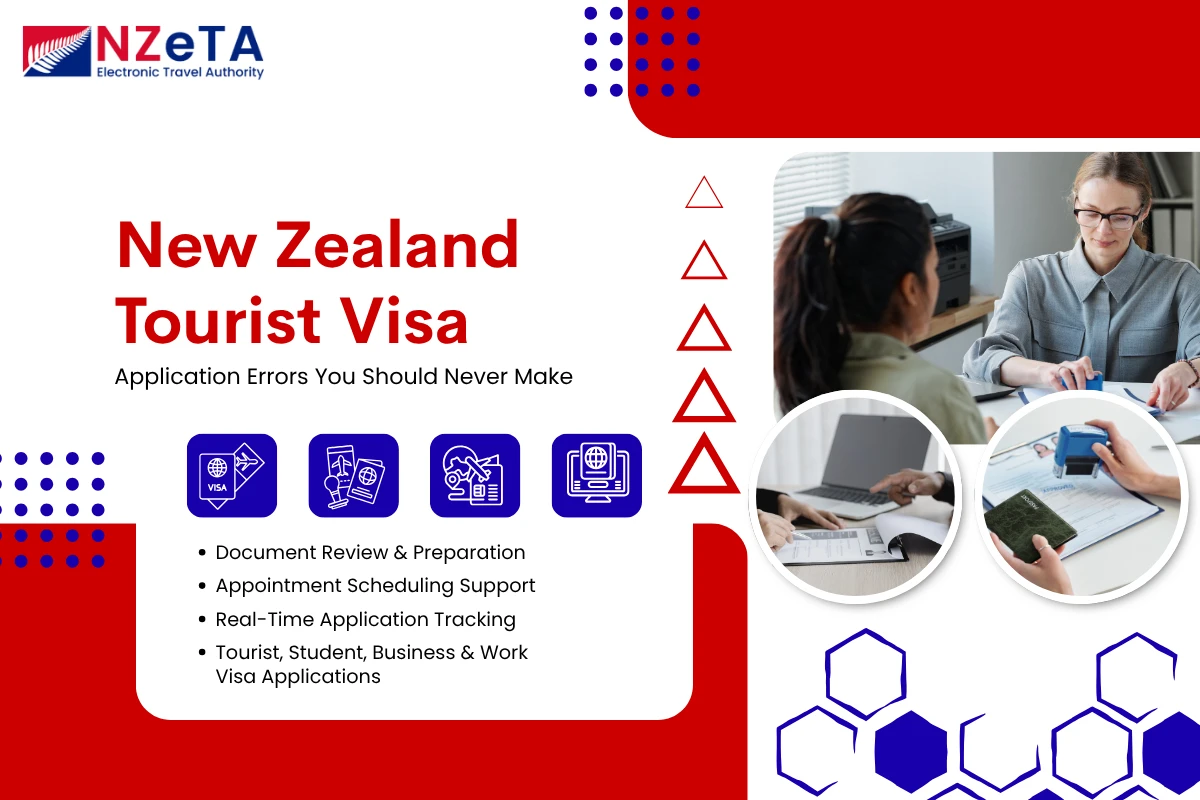
New Zealand Tourist Visa Application Errors You Should Never Make
Table of Contents
Planning a holiday to New Zealand is exciting — mountains, lakes and friendly towns call to many travellers. But before you pack, getting your New Zealand Tourist Visa right is very important. A small mistake can delay your trip, cause a refusal, or even lead to being turned away at the border. This guide will walk you through the common errors people make when applying for a New Zealand Tourist Visa, explain why each mistake matters, and show exactly how to avoid it. By the time you finish reading, you should feel confident about your application and know the next steps to take.
Know which travel permission you need
There are two main ways to visit New Zealand the electronic travel authorisation (NZeTA) and the visitor visa (the formal New Zealand Tourist Visa). Which one you need depends on your nationality and how long or why you are travelling. If your passport is from a visa-waiver country, you usually need an NZeTA; if not, you must apply for a visitor visa. Always check the official rulings so you don’t pick the wrong route.
Mistake 1 — Using the wrong website or an untrustworthy agent
Why people do this: someone on social media promises a “quick process” or a lower fee.
Why that’s risky: fake sites and rogue agents can steal your money or submit wrong documents. If immigration finds false information, you can be refused and possibly banned. Always use official government pages (Immigration New Zealand or the official NZeTA site) or recognised authorised service providers. If in doubt, go directly to the government site rather than trusting a random message.
Mistake 2 — Waiting too long to Submit NZeTA Online
If you do need an NZeTA, don’t leave it to the last minute. The NZeTA request usually takes up to 72 hours to process, though many are completed sooner. Travellers arriving without the right authorisation risk being refused boarding or entry. So, Submit NZeTA Online well before your trip — ideally days or weeks in advance — to avoid stress at the airport.
Mistake 3 — Sending incomplete or bad-quality documents
Common errors: photos that are blurry, scans missing passport pages, documents in the wrong file type, or untranslated papers. Immigration systems require clear, full-page scans in specified formats. If they cannot verify your identity or your purpose, they may delay or refuse your New Zealand Tourist Visa. Before you upload, check each file carefully and follow the size and type rules on the application page.
Mistake 4 — Weak proof of funds or no onward travel proof
Immigration must be reasonably sure you can support yourself and will leave at the end of your stay. Showing no bank balance or no return or onward ticket is a common reason for refusal. Even if you have an NZeTA, carry proof of funds and your return booking when you travel. Recent bank statements, an e-ticket for your onward flight, or a clear sponsor letter are good forms of evidence.
Mistake 5 — Giving a vague reason for your trip
A one-line answer like “holiday” is usually not enough. A short itinerary helps: dates, places, accommodations, and what you plan to do. A clear plan shows immigration officers that your visit is genuine and temporary. If your plans look unclear or inconsistent, they may worry you intend to stay longer or work illegally, which can harm a new zealand travel visa application.
Mistake 6 — Not being honest about health or character issues
New Zealand checks health and character as part of the visa process. If you have a criminal history or a health condition that must be declared, hiding it can cause refusal or future removal. If you need medical checks or a police certificate, include these documents and explain the situation. Being honest up front is always safer than trying to fix things later.
Mistake 7 — Assuming a visitor permission allows work or long study
A New Zealand Tourist Visa normally does not let you take paid work. Rules changed recently to allow some remote work for visitor visa holders, but conditions vary and change over time — check the latest guidance before you plan to work while visiting. If you intend to work or study, apply for the correct visa type instead of risking a conditions breach.
Mistake 8 — Not preparing for checks at arrival
Airlines and border staff may ask to see printed documents. Relying only on a phone can be risky if your battery dies or your phone is lost. Print PDFs of your passport page, visa or NZeTA confirmation, bank statements, and your return ticket. Also email copies to yourself for quick access. This simple step can prevent last-minute problems at check-in or on arrival.
Practical final checklist
- Confirm whether to Submit NZeTA Online or apply for a New Zealand Tourist Visa and do it early.
- Use official Immigration New Zealand pages to apply.
- Upload clear, complete documents and translations if needed.
- Carry proof of funds and onward travel.
- Be honest about health and character, and get required certificates.